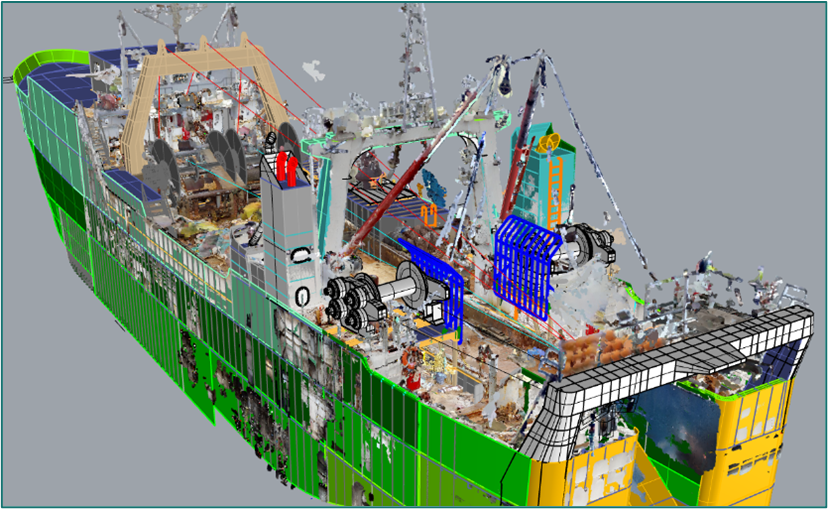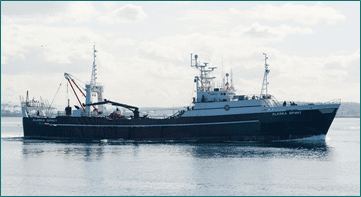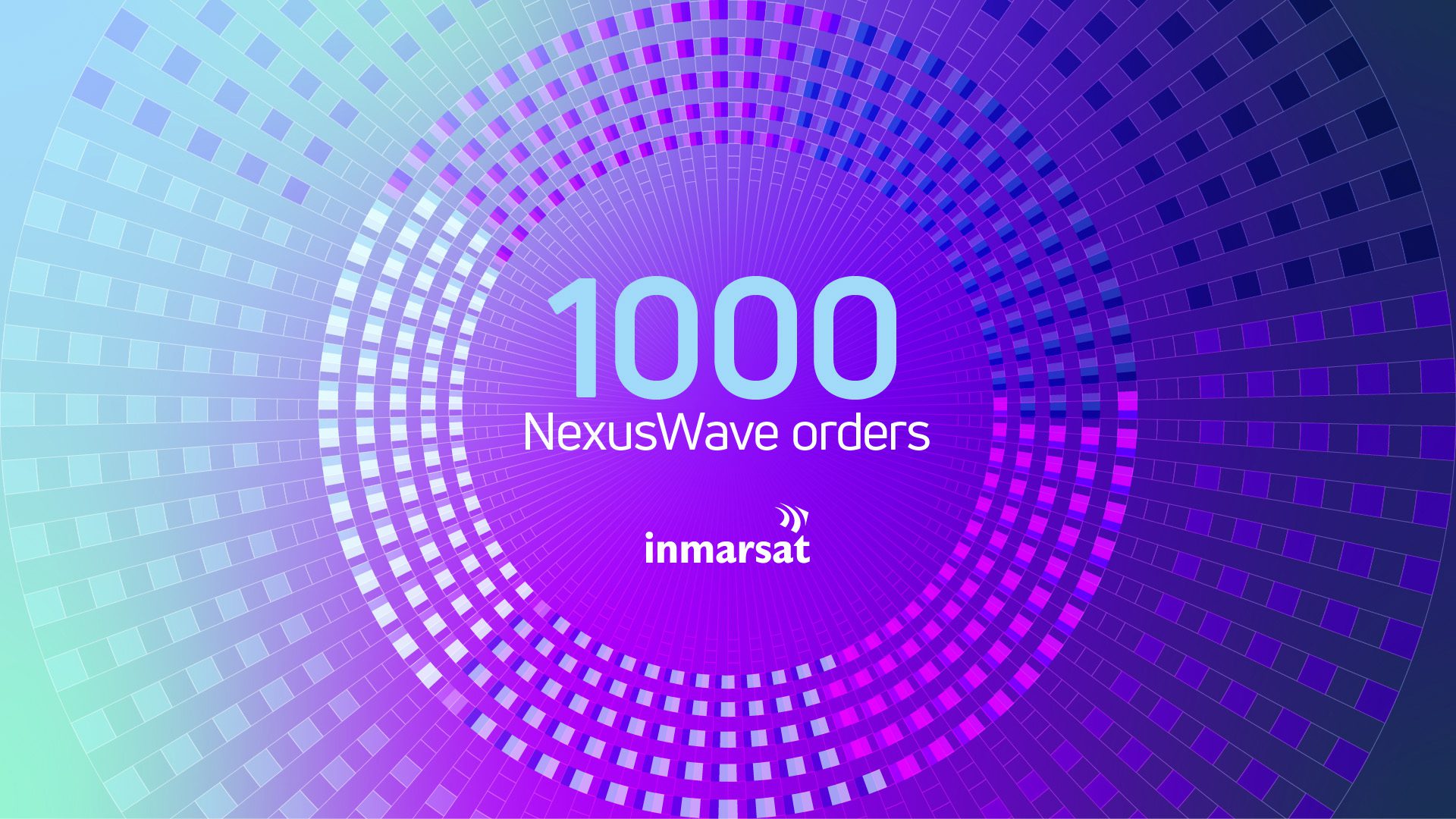Press Release – Elliott Bay Design Group (EBDG) is supporting O’Hara Corporation as they modernize their 204′ factory trawler, ALASKA SPIRIT. The vessel has been successfully fishing Alaska’s Bering Sea since 1989 when it was converted from an offshore supply vessel to a head and gut factory trawler. O’Hara has committed to a complete vessel overhaul to improve habitability, efficiency and optimize vessel performance.
The multi-year project kicked off in 2017, shortly after O’Hara acquired the vessel and selected EBDG as their designated engineering partner. Project planning has been very intentional to ensure vessel operations were not negatively impacted. The modernization work completed thus far has occurred during normal down time, meaning no seasons have been missed during the process.
Upgrades have included new generator and hydraulic engines, a new factory, conversion of underutilized aft tanks to stores, replacement of pilot house port lights with windows, habitability upgrades, and a complete rethinking of the trawl deck. EBDG has provided engineering support for much of this work while the USCG has provided oversight in accordance with the Alternate Compliance and Safety Agreement (ACSA).
For habitability, O’Hara has refurbished the crew quarters including upgrades to staterooms, laundry, showering and toilet spaces. They are currently in the planning phase for galley and mess area upgrades, expected in 2021, which will complete their accommodation improvements.
They have also added silencers to the exhaust lines of all diesel engines, substantially reducing onboard noise pollution for the crew. Prior to installation, noise on the trawl deck measured approximately 130 dB while the main, generator and hydraulic engines were operating. Following installation of silencers, the sound level dropped to 85 dB. For the silencers, EBDG engineered two new stacks and a rebuild of one. The starboard stack aft of the amidships gantry houses the main engine silencer, and the port stack outboard of the gantry houses two silencers for the new C18 generators installed. The port stack forward of the gantry was modified to allow installation of a silencer on the new C32 hydraulics engine.
When the vessel was converted for fishing in 1989, the crew relied solely upon burtoning gear. There were no net reels installed and spare nets were carried outboard of the trawl fence. O’Hara has since removed the forward burtoning gear and installed a knuckle boom crane. New trawl winches are being installed this year, and an equipment room is being constructed around the crane pedestal.
Next year, the existing trawl machine located at the forward end of the trawl deck will be removed. In its place will be a pair of net reels and a new Gilson gantry. The base of the gantry and reel foundations are being incorporated into an enlarged changing room for the deck crew. All these modifications have been lofted by EBDG and analyzed using Finite Element Analysis (FEA) software.
EBDG has scanned nearly the entire vessel, offering effective visual aids for O’Hara’s planning and extensive modeling.
Throughout the modification process, O’Hara has considered several different vessel options, one being the addition of a bulbous bow. EBDG investigated the addition by utilizing Computational Fluid Dynamics (CFD) analysis.
Four different bulb geometries were considered in three conditions of vessel loading. The conclusion of the analysis was that dramatic changes in vessel trim meant a bulb could significantly improve vessel efficiency for a particular loading, but would have comparable penalties to efficiency in other conditions of loading. As a side benefit of the analysis, it was determined that modifications to the bow thruster grating, a relatively inexpensive change, could realize an efficiency gain of over 1%. Ultimately, O’Hara decided not to install a bulbous bow.
O’HARA CORPORATION
O’Hara Corporation has withstood the test of time, operating fishing vessels across both the Atlantic and Pacific Oceans for over 110 years. The heart of O’Hara surrounds their catcher processor fleet of five vessels fishing in the Bering Sea, Aleutian Islands and Gulf of Alaska.
The ALASKA SPIRIT was originally built by Halter Marine Services in 1974 as an offshore supply vessel for the Gulf of Mexico. In 1989, the vessel was converted at Murakami Shipyard in Japan to a H&G fishing trawler for operation in the territorial U.S. waters of the Bering Sea. She now fishes for Atka mackerel, Pacific Ocean perch, yellowfin sole, rock sole, pollock and cod in Alaska.
ELLIOTT BAY DESIGN GROUP
Elliott Bay Design Group is a full-service, employee-owned naval architecture and marine engineering firm that supports owners, operators and shipyards. Our team of naval architects, engineers and analysts have expertise with designing and supporting all types of vessels and marine structures as well as analyzing the feasibility of marine transportation.

 Join The Club
Join The Club












